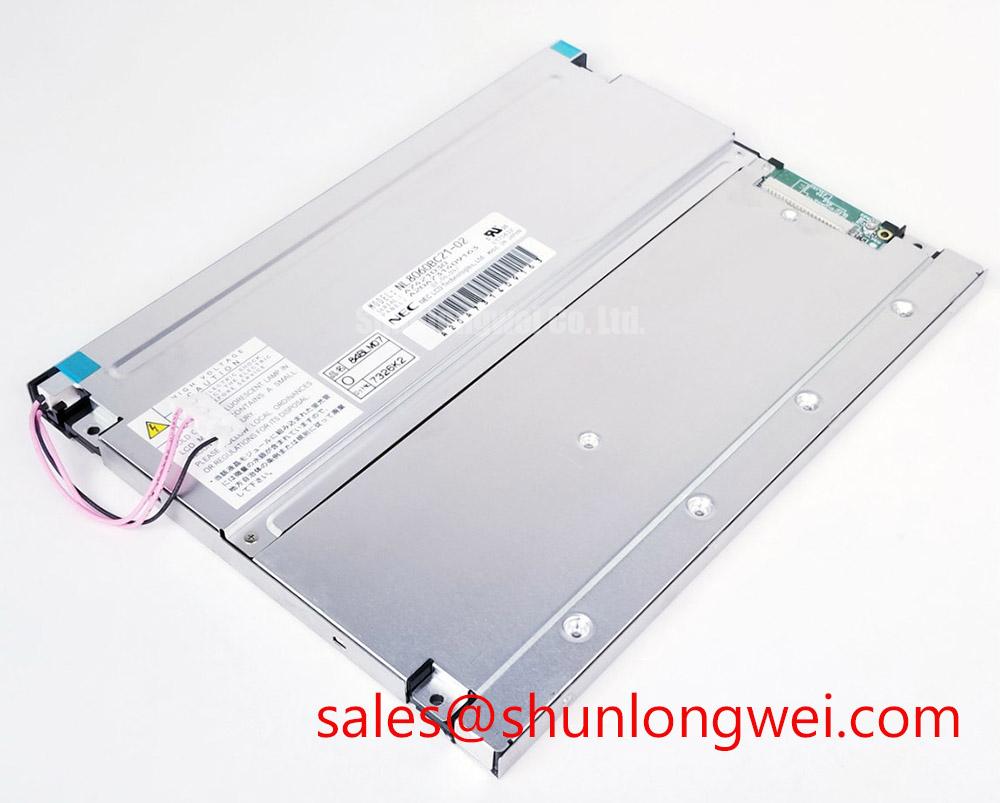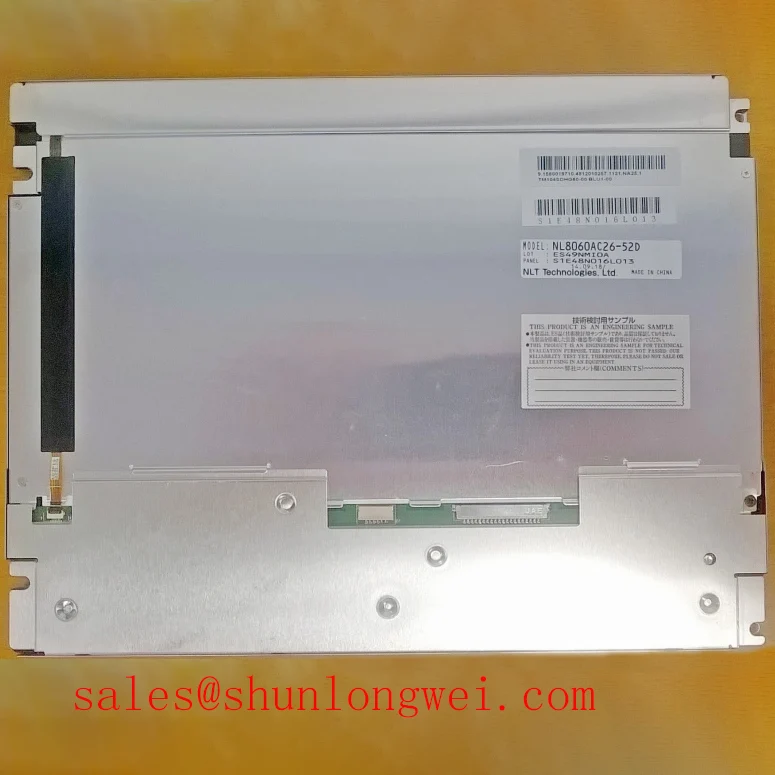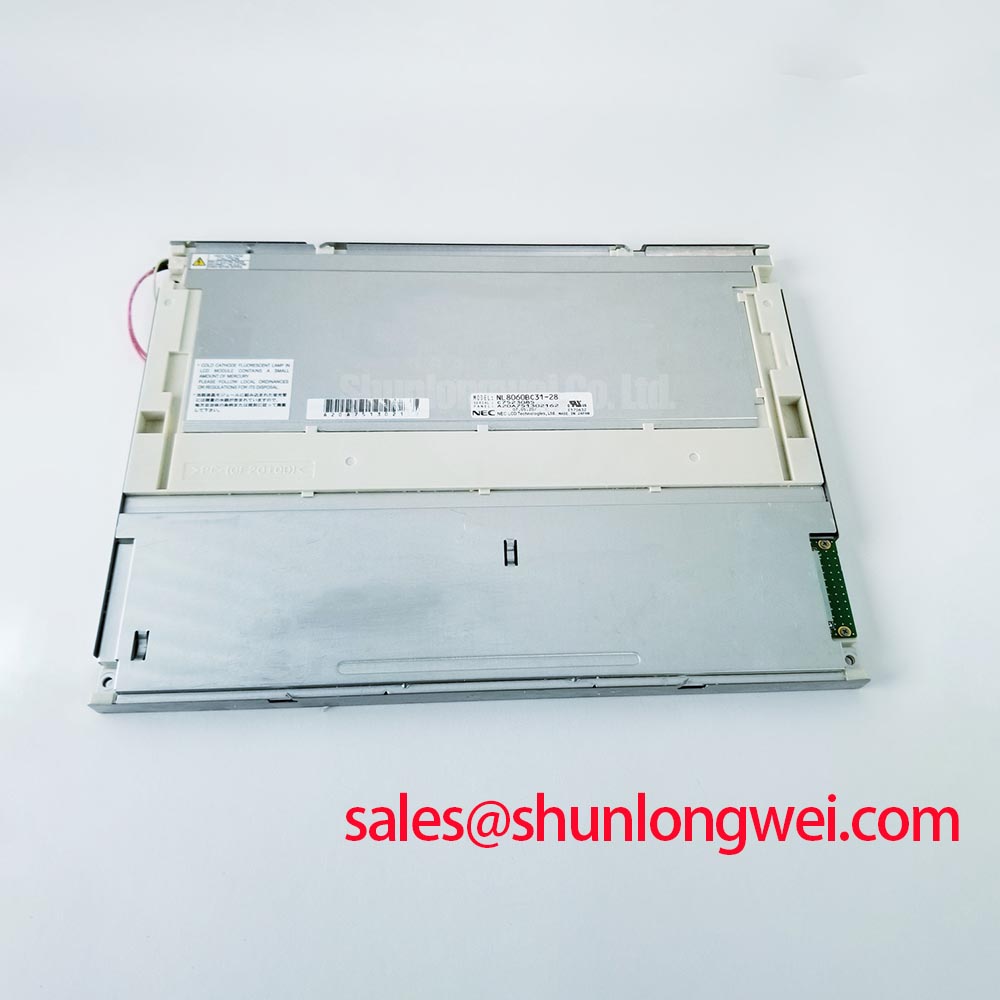Content last revised on November 14, 2025
NL160120BC27-10: 10.6-inch WXGA Industrial Display
Engineered for Durability in Demanding Environments
The NL160120BC27-10 is a 10.6-inch WXGA TFT LCD module designed for steadfast performance where mechanical and thermal stability are critical. Its value proposition centers on delivering consistent readability and operational uptime in challenging industrial settings. With core specifications of 1600x1200 Resolution | -20 to +70°C Operating Temp | 30G Shock Resistance, it provides robust mechanical design and extended thermal tolerance. For engineers concerned with total cost of ownership, a key feature is its field-replaceable backlight, which directly addresses the need for long-term serviceability and extends the asset's operational life cycle, mitigating the need for complete unit replacements.
NL160120BC27-10 Key Technical Specifications
The technical parameters of the NL160120BC27-10 are tailored for industrial integration. The selection below provides a snapshot of its primary capabilities, extracted from the official datasheet to support your design and evaluation process. For a complete dataset, downloading the full specification sheet is recommended.
| Display Characteristics | |
|---|---|
| Screen Size | 10.6 inches (27 cm) diagonal |
| Resolution | WXGA (1600 x 1200 pixels) |
| Pixel Pitch | 0.13275 (H) x 0.13275 (V) mm |
| Display Mode | Transmissive, Normally White |
| Surface Treatment | Anti-glare |
| Optical Performance | |
| Luminance | 350 cd/m² (typ.) |
| Contrast Ratio | 400:1 (typ.) |
| Viewing Angle (H/V) | -60 to +60° / -50 to +40° (typ.) |
| Response Time | 25 ms (typ.) |
| Electrical & Interface | |
| Interface | LVDS (Low Voltage Differential Signaling) |
| Logic Supply Voltage | 3.3 V |
| Backlight | LED, with replaceable lamp unit |
| Mechanical & Environmental Ratings | |
| Outline Dimensions | 242.0 (W) x 179.0 (H) x 10.5 (D) mm |
| Active Area | 212.4 (W) x 159.3 (H) mm |
| Weight | 430 g (typ.) |
| Operating Temperature | -20°C to +70°C |
| Storage Temperature | -30°C to +80°C |
| Vibration Resistance | 1.5 G (10 to 200 Hz) |
| Shock Resistance | 30 G |
Comparative Data for Informed Decisions
When evaluating displays for industrial systems, comparing key resilience and integration metrics is essential. The NL160120BC27-10 presents a specific profile against other common display types. The data below is intended to provide a factual basis for your selection process, ensuring the chosen component aligns with system-level requirements. For applications requiring different resolutions or interface technologies, models such as the G121XTN01.0 may offer alternative feature sets for consideration.
- Thermal Operating Range: The -20 to +70°C range of the NL160120BC27-10 is wider than many commercial-grade displays, which are often limited to 0 to +50°C. This broader range reduces the need for auxiliary thermal management systems in environments with significant temperature fluctuations.
- Mechanical Shock Rating: Its 30 G shock rating provides a higher tolerance to impacts and abrupt movements compared to standard panels. What is the benefit of a high shock rating? It ensures data integrity and display survival in mobile machinery or environments with high levels of mechanical stress.
- Resolution and Aspect Ratio: The WXGA (1600x1200) resolution in a 10.6-inch format delivers a high pixel density suitable for detailed graphical user interfaces (GUIs) or data-intensive readouts, a key consideration for advanced HMI design.
Built for Longevity: Strategic Advantages in Industrial Deployment
The design philosophy behind the NL160120BC27-10 prioritizes operational longevity and resilience, translating into tangible strategic benefits for long-lifecycle industrial equipment. Its features align with key industry trends that emphasize reliability and a lower total cost of ownership (TCO) over the initial component cost. As automation and data visualization become more prevalent on the factory floor and in the field, the dependability of the human-machine interface becomes a critical factor in overall system uptime. You can find more insights on designing durable HMI systems in our guide to sunlight-readable HMIs.
Anatomy of Resilience: A Deeper Look at Mechanical Design
The durability of the NL160120BC27-10 is not an accident but a result of deliberate engineering choices targeting industrial weak points. Its mechanical and environmental specifications are foundational to its performance in non-ideal conditions.
- Vibration and Shock Hardening: The module is specified to withstand 1.5 G of vibration and 30 G of shock. This level of mechanical integrity is achieved through robust internal mounting of the TFT glass and secure chassis construction, preventing interconnect failures or physical damage in applications like construction vehicles, agricultural machinery, and portable test equipment.
- Wide Thermal Headroom: The operating temperature range of -20°C to +70°C allows for deployment in environments from cold storage facilities to sun-exposed control panels without performance degradation. This thermal resilience is like having a wide safety margin in an electrical circuit; it ensures the display operates predictably, even when the ambient conditions push toward their limits.
- Service-Oriented Backlight Design: One of the most common failure points in a long-serving LCD is the backlight. The NL160120BC27-10 features a replaceable LED backlight unit. This design choice significantly enhances field serviceability, allowing technicians to restore display brightness to factory levels without replacing the entire expensive TFT module, directly improving the system's TCO.
Deployment Scenarios: Where Reliability is Paramount
The specific combination of high resolution, wide temperature range, and mechanical robustness makes the NL160120BC27-10 a strong candidate for a variety of demanding sectors. The engineering behind its construction ensures that it provides more than just an image; it delivers a reliable data interface under stress.
- Industrial Automation & HMI: On factory floors, control panels are exposed to constant vibration, temperature swings, and potential impacts. The display's durability ensures that operator interfaces for robotics, CNC machines, and process control systems remain functional and readable.
- Transportation and Mobile Machinery: From cabin displays in agricultural and construction equipment to information panels in mass transit, the specified shock and vibration resistance is essential for maintaining operational integrity on the move. For mobile applications prioritizing uptime in harsh conditions over sheer brightness, this display's 30G shock rating makes it a well-suited choice.
- Medical and Scientific Instrumentation: The high WXGA resolution provides the clarity needed for detailed data visualization on diagnostic equipment and lab instruments, while its reliability ensures these critical systems remain operational.
To further understand the principles behind modern industrial displays, explore The Ultimate Guide to TFT LCDs. For your specific application needs, please consult the official NL160120BC27-10 datasheet or contact our technical support team for further clarification.
Frequently Asked Questions
1. What is the primary engineering advantage of the LVDS interface on the NL160120BC27-10?
The LVDS (Low Voltage Differential Signaling) interface provides two key benefits for industrial systems: high noise immunity and low electromagnetic interference (EMI). In electrically noisy environments like factory floors with many motors and drives, this robust signaling ensures data integrity between the controller and the display, preventing image corruption.
2. How does the "Normally White" display mode affect usability in industrial applications?
A "Normally White" twisted nematic (TN) panel means that pixels are transparent in an off state (no voltage applied). In the event of a catastrophic driver failure where the pixel loses its signal, it will appear white. This can be a consideration for certain safety-critical systems where a black screen (fail-dark) might be preferred, but it also generally offers faster response times, which is beneficial for dynamic GUIs.










